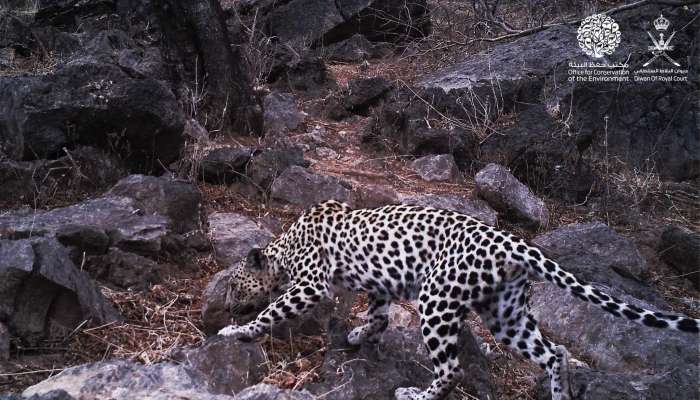
Muscat: A new study has revealed the presence of the Arabian Leopard in a new place in the Sultanate, the Office for Conservation of Environment (OCE) announced. The animal is a rare breed that inhabits the Arabian Peninsula.
It is classified by the International Union for Conservation of Nature (IUCN) as being threatened with extinction at the critical level.
A recent environmental study carried out this year by the Environmental Conservation Office at the Diwan of the Royal Court, represented by the Department of Environmental Affairs in Salalah, revealed a new scientific registration confirming the presence of the Arabian leopard in the area west of wilayat of Dhalkut in the Dhofar Governorate in two different locations.
The OCE said, “The office previously carried out some field studies in the region, but it did not record any indications of the presence of the Arabian leopard in the wilayat, despite the fact that the local people reported the existence of this rare animal.”
Dr Hadi Al Hakmani, Director of the Department of Environmental Affairs in Salalah said, “Our comprehensive surveys in the wilayat of Dhalkoot aimed to verify the presence of the Arabian Leopard in it, and to monitor and document other wild mammals that live in the region. The results of the new study also revealed the monitoring and documentation of other rare types of wild mammals.” Regarding the methods used in the study, Al-Hakmani added, “Due to the ruggedness and difficulty of the region and the living system of the Arabian leopards and other wild animals, environmental researchers have used a number of modern means and techniques that have proven effective in studying rare species and which are difficult to study in direct ways, most notably the trap cameras and surveys of monuments, to collect samples of predator droppings to do future genetic analyses to find out the source of these samples.” Referring to the followed work mechanisms, Al Hakmani said, “We strived to conduct the study in a comprehensive scientific way, as we divided the area that was allocated for the implementation of the study in the western wilayat of Dhalkut into about 60 squares (the area of each square is 1 km square). After that, we got to know the most important tracks of wild animals, where approximately 17 trap cameras were installed for a period of about 80 days, after which those cameras were collected and the data they contained were sorted and analysed.” “The study also revealed the existence of eight species of wild mammals inhabiting the region. Where it represents at least 17 per cent of the land mammals registered in Oman,” Al Hakmani confirmed. “These results indicate biological diversity in the study area and its environmental importance, especially with its incubation of a number of wild mammals that are considered threatened or vulnerable to extinction according to the classification of the International Union for Conservation of Nature,” he added. “This prompts us to make great efforts in protecting the area and tightening environmental control therein in order to preserve its ecological diversity.”